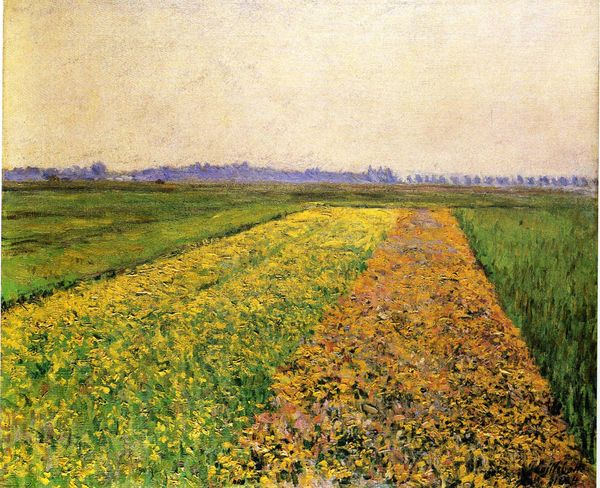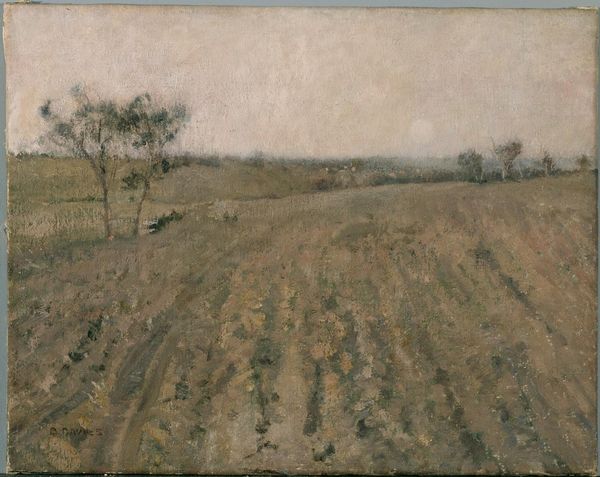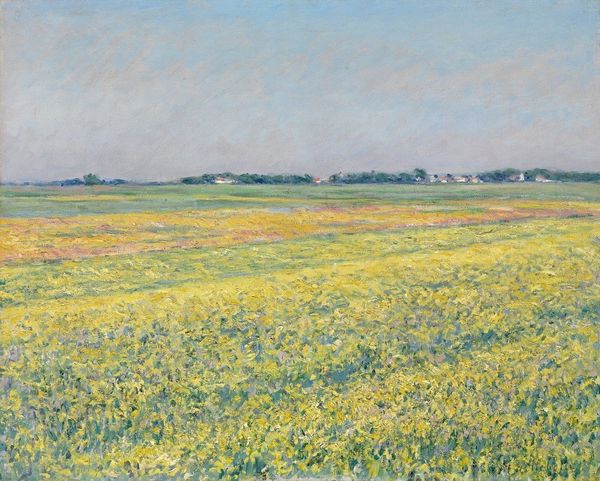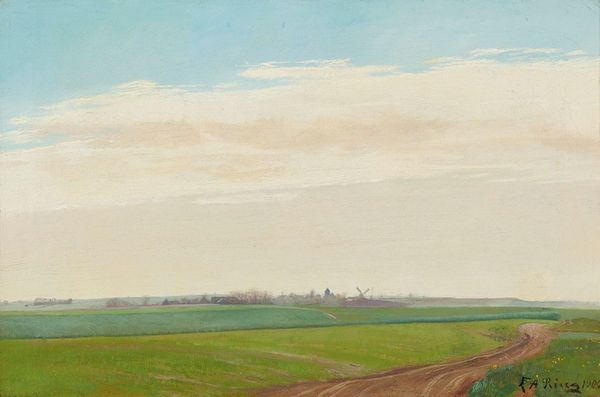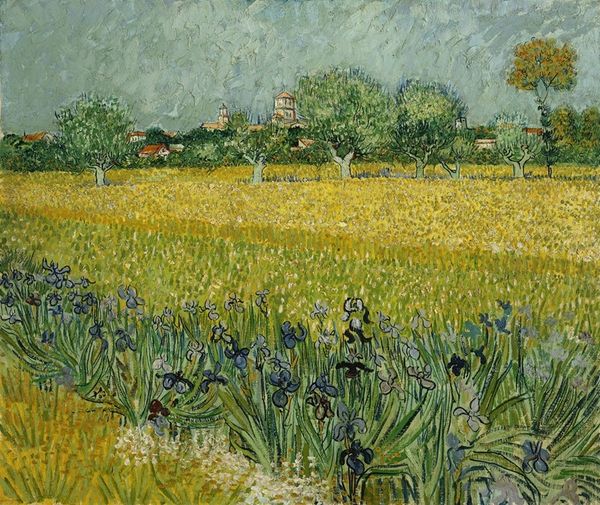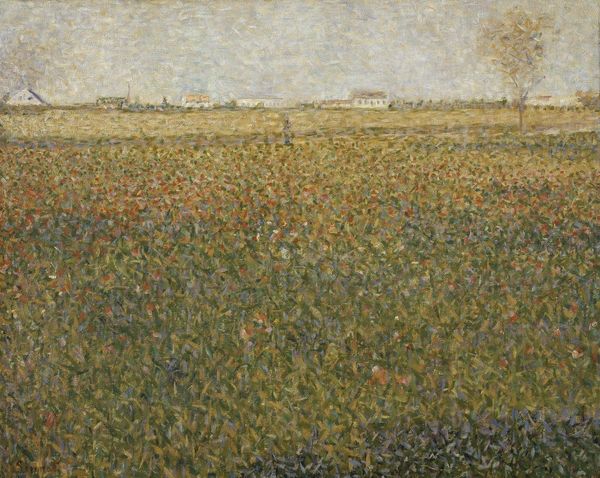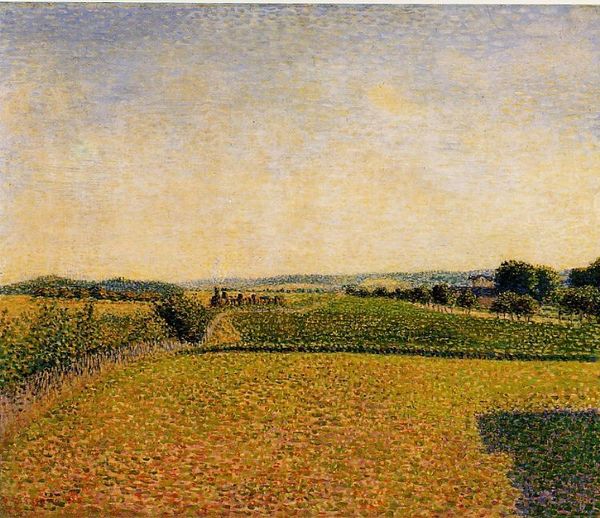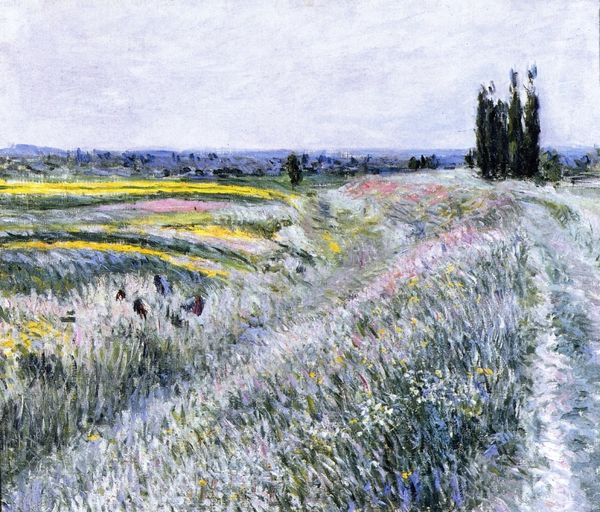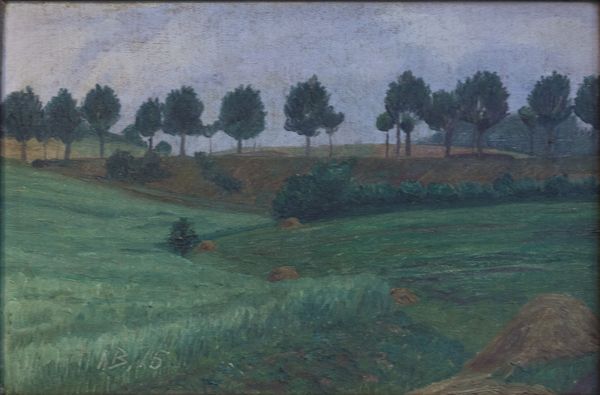
Dimensions: height 20 cm, width 35 cm
Copyright: Rijks Museum: Open Domain
Editor: Welcome! This is Gerrit Willem Dijsselhof’s "Tulip Fields," likely painted between 1890 and 1922. It appears to be watercolor and colored pencil on paper and currently resides in the Rijksmuseum. There's a striking quietness to it, a delicate layering that I find quite calming. What do you see in this piece? Curator: The charm certainly lies in the piece's compositional arrangement. Notice the meticulous horizontal structuring. Dijsselhof crafts an image built on distinct bands of colour. Observe the varying hues—whites, reds, yellows, greens—and how each interacts with its neighbours. Do you see how this layering guides your gaze? Editor: I do, almost like a map leading into the distance. There's also this division of space - the close-up detail of the tulips contrasts with the vaguer windmills and figures in the distance. It makes the field feel immense. Curator: Precisely. Note the careful distribution of colour to generate an impression of spatial recession. Further, one might analyse Dijsselhof's calculated placement of visual elements like the farmers or hay stacks in order to activate and thereby modulate visual movement through the image. These forms serve not only as thematic elements but contribute significantly to the overall pictorial syntax. Editor: It’s fascinating how much structure underlies such a seemingly simple landscape! Curator: Formal analysis encourages that view; reducing our dependency on cultural interpretation, encouraging a deep reading of line, form and colour. By removing symbolism, one reaches the essential building blocks of art-making. Editor: I can appreciate that. Focusing on composition gives me a totally different angle. Curator: Yes, and by employing this perspective, one arrives at a far deeper appreciation of the art displayed. Editor: Thanks so much, that gives me a whole new way of seeing the painting!
Comments
No comments
Be the first to comment and join the conversation on the ultimate creative platform.

